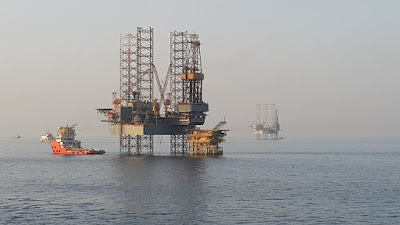According to the new market research report "Offshore Support Vessel Market by Type (AHTS, PSV, MPSV, Standby & Rescue Vessel, Crew Vessel, Chase Vessel, Seismic Vessel), Application (Shallow water and Deepwater), End-User (Oil & Gas and Offshore Wind), and Region - Global Forecast to 2026", published by MarketsandMarkets™, the global Offshore Support Vessel Market is expected to grow at a CAGR of 4.0%, from 2021 to 2026, to reach a market size of USD 26.8 billion by 2026. The market growth is driven by robust investments in the offshore oil & gas and renewable sectors. Increasing deepwater activities and decommissioning of aging offshore infrastructure is likely to offer lucrative opportunities for the Offshore Support Vessel Market. However, fluctuating crude oil prices have offset the growth of the Offshore Support Vessel Market in the past years and resulted in the oversupply of vessels. This would restrain the growth of the market during the forecast period. Government regulations and high operational risks continue to be challenges for the Offshore Support Vessel Market.
One of the key factors influencing the global energy demand is the growth in the human population. The UN World Population Prospects predicts that the world population will increase from 7.6 billion in 2017 to 9.8 billion by 2050. This rise in the demand for energy has to be met with various energy sources such as oil & gas, renewables, thermal, and nuclear power. According to the BP Statistical Review of 2019, the world still had unexplored 1,729.7 billion barrels of oil reserves by the end of 2018. Discoveries of such reserves are translating into demand for well drilling and production activities, which, in turn, are supporting the offshore support vessel market growth. Moreover, regions that have high energy demand, such as Asia Pacific, are planning to augment their offshore production. Countries such as India and China, which have offshore oil and gas basins in the Indian Ocean and South China Sea, respectively, have huge potential for offshore oil and gas exploration. Apart from the Asia Pacific region, major discoveries are being made in the offshore region of Africa, especially in western Africa.
Download PDF Brochure:
https://www.marketsandmarkets.com/pdfdownloadNew.asp?id=1212
The oil & gas segment is expected to dominate the Offshore Support Vessel Market.
The lifecycle of oil and gas fields can be segmented into 4 phases, namely, exploration, development, production, and decommissioning; each phase has its own set of requirements. Offshore support vessels are designed for specific operations and deliver support services at offshore drilling rigs and oil-producing assets, such as production platforms and floating production storage and offloading (FPSO) unit. These offshore support vessels are also used to carry out pipe laying services and decommissioning of offshore rigs. In the North Sea alone, over 450 platforms, 10,000 km of pipelines, and 5,000 wells are expected to be decommissioned by 2040. According to the Oil & Gas UK, an offshore oil & gas industry association in the UK, decommissioning of this infrastructure would cost up to USD 80 billion. Globally, there are approximately 7,000 offshore structures that are eligible for decommissioning. The Gulf of Mexico and the North Sea are two of the largest regions with most infrastructure eligible for decommissioning. Decommissioning of rigs generates demand for offshore support vessels, thereby driving the market growth.
Asia Pacific: The largest Offshore Support Vessel Market.
In this report, the Offshore Support Vessel Market has been analyzed with respect to 6 regions, namely, North America, Asia Pacific, South America, Europe, Middle East, and Africa. Asia Pacific is expected to dominate the global Offshore Support Vessel Market between 2021 and 2026. The major economies in Asia Pacific, such as China, India, Indonesia, Malaysia, Vietnam, and Thailand, are focusing on increasing their offshore E&P CAPEX. According to Scottish Development International, the CAPEX for new offshore developments in Asia Pacific is set to be about 25% of the global spending, making the region an important part of the offshore industry. Various policymakers in the region are prioritizing new offshore activities in deep and ultra-deep waters. The most important of these new offshore developments include Australia’s Briseis, Scarborough, and Laverda projects; Malaysia’s Rotan, Gumusut-Kakap, and Petai projects; India’s KG-D6 complex; and Indonesia’s Gehem project. Moreover, the count of offshore support vessels is also growing in the region due to an increase in the number of vessel manufacturers in the market, especially from China and South Korea.
Request Sample Pages:
https://www.marketsandmarkets.com/requestsampleNew.asp?id=1212
To enable an in-depth understanding of the competitive landscape, the report includes the profiles of some of the top players in the Offshore Support Vessel Market.
Some of the key players are DOF group
(Norway), Solstad Offshore (Norway), Tidewater (US), Maersk (Denmark), and Siem
Offshore (Norway). The leading players are adopting various strategies to
increase their share in the Offshore Support Vessel Market. Expansions
have been a widely adopted strategy by the major players in the Offshore
Support Vessel Market.

No comments:
Post a Comment